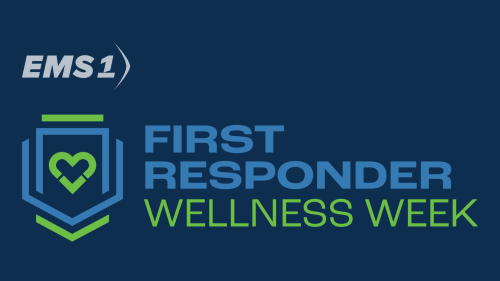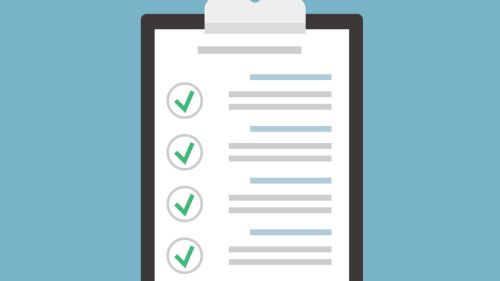Fill out the form on this page to download the EMS1 Guide to a better night’s sleep.
A headline in “The New York Times” read, “The Army Rolls Out a New Weapon – Strategic Napping!” The old British soldier in me immediately quipped on most of my social media channels that it appears that the U.S. Army has finally caught on to the time-honored British military convention; “why stand when you can sit, why sit when you can lay down and why lay down when you can sleep.” Many of my veteran friends from both sides of the pond identified that their ability to catch the ZZZs any time, any place, anywhere was a well-honed skill.
Joviality aside, fatigue is an absolute killer no matter what uniform one wears, and it is worth looking at what the Army said, and what public safety can learn from it.
Army Field Manual (AFM) 7-22 – Holistic Health and Fitness establishes the Army’s doctrine for the readiness training of soldiers. The 244-page tome lays out an entire ethos of how the soldier can be physically, mentally and spiritually ready to fight. Part and parcel of that preparation includes nutritional and sleep readiness. While we are not training to fight the enemy, we are training to be ready to serve our communities – 24/7/365. Fatigue is very real in any EMS or public safety system and the way we sleep, the quality of our sleep, and importantly the length of out sleep can shape the effectiveness of our job performance.
The AFM isn’t telling us anything we don’t already know. As an emergency service, we are on active duty every moment of every day, amassing more than a national 40 million patient contacts a year, we don’t stop. The current pressures of pandemic and natural disaster, coupled with reduced staffing numbers, means the pressure to fill the schedule is always constant and sometimes, we run the risk of letting staff back on the truck before they are rested and ready to go – a dangerous practice.
- Unlock Functional Fitness
- Transforming Post-Traumatic Injury Into Growth
- How to Build Wealth and Crush Debt
- Building Effective Wellness Programs
- The Power of Connection: Family, Friends Faith
EMS researchers have weighed in on this issue. In 2019, NHTSA’s Office of EMS published its “Fatigue in Emergency Medical Services Systems” document authored by Daniel Patterson, PhD, NRP; and Kathy Robinson, RN, EMT-P. The paper identified five key recommendations:
- Using reliable and/or valid fatigue/sleepiness surveys to measure and monitor fatigue in EMS personnel
- EMS personnel work shifts shorter than 24 hours long
- EMS personnel have access to caffeine as a fatigue countermeasure
- EMS personnel have opportunities to nap while on duty to mitigate fatigue
- EMS personnel receive education and training to mitigate fatigue and fatigue-related risks
Along with each recommendation, a set of performance measures identified goals to be achieved. This included showing the percentage of all shifts where personnel are provided with access to and permission to take a nap while on duty. Given the timing of the report and the spread of COVID-19, neither measures nor metrics have been established on a grand scale nor the subject discussed in the national arena.
The AFM also identifies the benefits of napping and caffeine. They note that when regular nighttime sleep is not possible due to mission requirements, soldiers can use short, infrequent naps to restore wakefulness and promote performance. When routinely available sleep time is difficult to predict, soldiers might take the longest nap possible as frequently as time is available. During periods of restricted sleep (6 hours of sleep or less per night), napping, combined with appropriate doses of caffeine may help to sustain cognitive performance and alertness
It is worth revisiting the benefits of rest using the key messages of the AFM. It reminds us that we are biologically designed to be awake during the day and sleep at night. Soldiers are reminded that to achieve optimal readiness, they must have sleep and the more sleep obtained the better. Inadequate sleep weakens performance and jeopardizes the mission. This is no different for EMS or any public safety function in this respect.
Here are 6 takeaways from the Army Field Manual doctrine on readiness and sleep:
1. The science behind tactical napping
Most soldiers (and EMTs) need 7 to 9 hours of sleep every 24 hours to maximize health and sustain performance. The brain requires sleep to maintain normal function. Sleep is necessary to sustain not only alertness, but also higher-order cognitive abilities, such as judgment, decision making and situational awareness.
During sleep, the body releases hormones that help repair and rebuild muscles and replenish energy. During sleep, the body also clears toxins that have accumulated throughout the day (as by-products of healthy brain functioning) from the brain; and fixes and transforms new memories into usable knowledge.
2. Barriers to quality sleep
Sleep duration and continuity are optimized in environments that are quiet, dark and maintained at a comfortable ambient temperature. Some individuals believe that they sleep better with music or a television on, that they can sleep anywhere and that ambient noise does not bother them. Research shows that this is not the case.
Soldiers do not get good sleep on a cot in the tactical operations center. Although sleepers are not aware of it, environmental sounds cause brief arousals momentary speeding of the brain’s electroencephalograph activity during sleep — that effectively disrupt sleep continuity and reduce the restorative value of that sleep. Likewise, bright lights and excessively hot or cold environments can disrupt sleep continuity and reduce the restorative value of sleep.
3. Getting to sleep tips
Stress is incompatible with sleep. Pre-sleep routines that promote winding down – such as listening to soothing music, reading or taking a warm shower or bath – about 30-60 minutes before bedtime tend to facilitate the transition to sleep. These routines will maximize sleep duration.
Conversely, activities such as watching television, playing video games, chatting online and similar interesting or engaging activities tend to arouse the brain and delay sleep onset. These activities reduce the amount of sleep obtained and should be avoided during the pre-sleep wind-down period. Those experiencing significant stress often find relaxation techniques such as meditation and mindfulness exercises helpful.
4. How tobacco and alcohol impact sleep quality
Tobacco product use is also antithetical to sleep. People smoke before sleep to wind down. The stimulant in nicotine tells the body to get active while it increases heart rate and alertness. Although alcohol increases drowsiness and can facilitate sleep onset, it subsequently lightens and disrupts sleep as the body metabolizes it during the night. It causes multiple arousals and awakenings, thus harming sleep more than it helps.
Abstinence is the best strategy when a good night of sleep is especially important for next-day activities or missions.
5. Shift impact on sleep quality
People who work at night might be less productive and less well-rested since they work when their brains promote sleep. The brain’s internal sleepiness-alertness cycle directly impacts performance. Because of this, work performed between 2300 and 0800 hours is generally less efficient (slower and with a greater number of errors) than work performed during the daytime and early evening hours. Leaders should anticipate reduced performance.
6. Off-duty sleep
Maintaining a consistent sleep-wake schedule on both duty and non-duty days has the benefit of strengthening and reinforcing the internal wake- and sleep-promoting processes controlled by the brain’s internal clock. These processes constitute the circadian rhythm of alertness.
If individuals get less sleep (for example, 6 hours per night during the duty week), then a sleep debt accrues. In such cases, it is better to sleep in on off-duty days and pay down the sleep debt, rather than sacrificing sleep to try to maintain a consistent sleep-wake schedule and strengthen the circadian rhythm of alertness.
Leaderhip’s role in emphasizing sleep health
My children and significant other will testify that I am a professional, seasoned napper, who conducted extensive research and method acting to construct this article, but seriously, I have found nothing wrong with a power or combat nap as I was conditioned into it in my former military life.
The notion of get your rest now because you don’t know when your next sleep will arrive is as relevant to EMS as it is to the battle day. It is also a function of leadership and command. Each of my soldiers was issued an eat/sleep card which was completed and checked every day when in the field. Those who had been on prolonged tasks were assigned as priority sleepers; their sleeping bags were marked with colored tape and they were not disturbed for a pre-agreed amount of time.
Perhaps the EMS version of this must at least be the allowance of a no return time between shifts. The real elephant in the fire and EMS bedroom that creates fatigue is unaddressed in this article and that is shift length. Increasing demand on services means that there is minimal rest to be had and this compounds into a fatigue time bomb.
While we can’t tuck all our staff in at night (or day), at least we can allow them to rest and nap during downtime and extol the virtues of good restorative sleep in their off-duty periods. Adherence to the AFM and the work of NHTSA may just save a vehicle accident, a medication error and lives, and I’ll snooze to that.
Tactical napping: EMS One-Stop With Rob Lawrence
In the recording below, Rob is joined by Professor Stephen James, PhD, core faculty member, Sleep and Performance Research Center; and co-director, Counter Bias Training Simulation at Washington State University. For his MA in criminal justice, his thesis was on “Impact of policies on mobile digital computer use while driving in law enforcement vehicles.” Dr. James is a native of Dublin, and, like Rob, an alum of the UK’s Royal Military Academy Sandhurst and a former British Army officer. He is well known in law and DoD research circles and is an expert in the sleep and fatigue field.
This article was originally posted Oct. 9, 2020. It has been updated to include additional resources.
Fill out the form on this page to download the EMS1 Guide to a better night’s sleep.

















